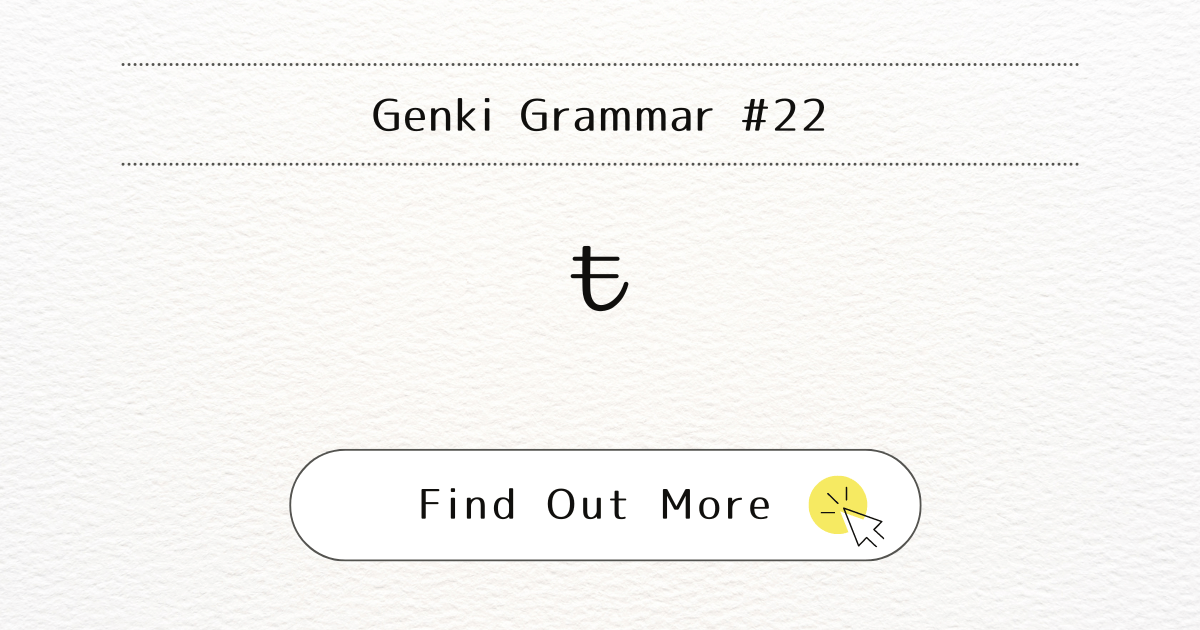
Introduction
In this post, we’ll explore how to use “も” (mo) in Japanese. We previously learned about using “も” with nouns to show shared attributes. Now, we’ll see how “も” can help you express shared activities too.
What It Means
“も” (mo) is a particle in Japanese that means “also” or “too.” It’s used to indicate that something has the same attribute or action as something previously mentioned.
When You Use It
You use “も” (mo) when:
- The second item shares a common attribute with the first. (See Noun も)
- Two or more people perform the same activity.
- Someone buys, sees, or eats two or more things.
Examples
Let’s look at some examples to understand how “も” (mo) is used:
Example 1: Shared Activity
- 私はきのう東京に行きました。
I went to Tokyo yesterday.
田中先生もきのう東京に行きました。
Professor Tanaka went to Tokyo yesterday, too.
Example 2: Buying Multiple Things
- マリアさんは靴を買いました。
Maria bought shoes.
マリアさんはかばんも買いました。
Maria bought a bag, too.
In these examples, “も” (mo) replaces “は” (wa) and “を” (o).
More Examples with Other Particles
When using other particles like “に” (ni) or “で” (de), you keep them and add “も” (mo).
Example 3: Visiting Multiple Places
- 私は先週東京に行きました。
I went to Tokyo last week.
横浜にも行きました。
I went to Yokohama, too.
Example 4: Attending on Multiple Days
- マイケルさんは土曜日に学校に来ました。
Michael came to school on Saturday.
日曜日にも学校に来ました。
Michael came to school on Sunday, too.
Example 5: Reading in Multiple Places
- りくさんはうちで本を読みました。
Riku read a book at home.
カフェでも本を読みました。
He read a book at a cafe, too.
In these examples, “も” (mo) is added after “に” (ni) and “で” (de) to indicate that the action applies to multiple items or situations.
Note
Remember:
- Replace は (wa), が (ga), or を (o) with も (mo).
- With other particles like に (ni) and で (de), add も (mo) after the particle.
Conclusion
Using “も” (mo) is a great way to connect sentences and show that actions or attributes share something in common. Practice using “も” (mo) to make your Japanese sound more natural and smooth.



